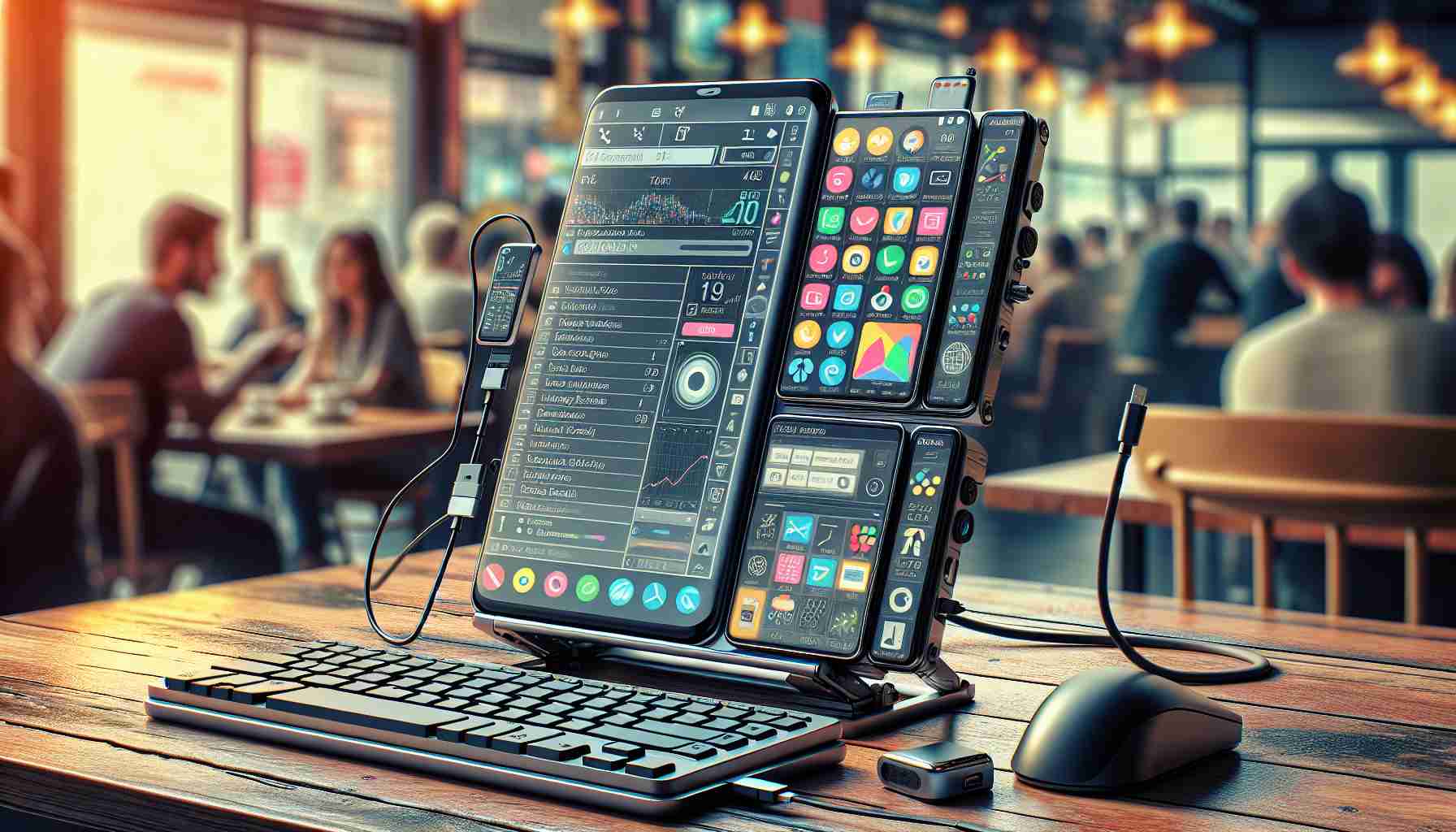In today’s fast-paced world, flexibility in workstations is more crucial than ever. With the invention of mobile applications, professionals can now utilize their smartphones as multifunctional tools, making it easier to streamline their workspace while on the go. One such noteworthy app is Bluetouch, available on both Android and iOS/iPadOS.
For individuals who frequently travel, setting up a temporary work environment can be cumbersome. Often, carrying a laptop along with a mouse and keyboard can be cumbersome. Bluetouch circumvents this issue by transforming your smartphone into both a mouse and keyboard. This innovative app uses Bluetooth technology to connect your mobile device seamlessly to your tablet, allowing you to navigate with ease.
The app’s functionality extends beyond just mouse capabilities. Users can also simulate keyboard commands directly from their smartphones, although it may be more convenient to use a larger device for extensive typing tasks.
While the application is free to use, it does feature advertisements. Users can opt to remove these ads for a small fee, and additional costs apply for customizable layouts. Bluetouch requires iOS 12 or later, while Android devices need to run at least version 5, ensuring a broad range of compatibility with various devices.
Before fully committing, testing the app’s functionality with the free version is advisable. This way, users can ascertain its effectiveness across different devices, ensuring a smooth experience when working remotely.
Transform Your Smartphone into a Portable Workspace: A Comprehensive Guide
In a world where remote work has become the norm, the ability to transform your smartphone into a portable workspace is increasingly valuable. Smartphones are no longer just communication devices; they are powerful tools that can facilitate productivity on the go. Here, we explore the latest features of smartphones that enable this transition, address key questions, and discuss both the advantages and disadvantages associated with using a smartphone as a primary workspace.
Key Questions and Answers
1. What are the essential apps for creating a portable workspace?
– Beyond Bluetouch, there are several other noteworthy apps like Microsoft Office Suite, Google Workspace, Notion, and Slack. These applications allow for document editing, cloud storage, project management, and team collaboration directly from your smartphone.
2. How do I maximize my smartphone’s functionality for work?
– Utilizing cloud-based services, optimizing your phone’s storage capacity, and integrating external hardware such as Bluetooth keyboards and mice can significantly enhance your smartphone’s capabilities as a work device.
3. Are there security concerns when using a smartphone for work?
– Yes, security is a major concern. It’s crucial to employ strong passwords, use two-factor authentication, and be wary of public Wi-Fi networks. Having a reliable mobile security solution is also recommended.
Key Challenges and Controversies
One of the challenges of relying on a smartphone as a primary work device is the screen size. While technology like screen mirroring can enhance the display experience, extended use of a small screen may lead to eye strain and discomfort. Furthermore, multitasking can be more challenging on smartphones compared to larger devices, which can affect productivity.
Another concern is the distraction factor. Smartphones are equipped with numerous apps that can divert attention from work-related tasks, often detracting from overall productivity. The balance between using a smartphone as a tool versus a source of distraction is a topic of ongoing debate.
Advantages of Using a Smartphone as a Workspace
– Portability: Smartphones are compact and lightweight, making them easy to carry. This enables professionals to work anywhere at any time.
– Integrated Features: From cameras for scanning documents to GPS capabilities for travels, smartphones come equipped with versatile features that enhance the working experience.
– Cost-Effective: Leveraging existing smartphones may reduce the need for expensive laptops or tablets, especially for basic tasks.
Disadvantages of Using a Smartphone as a Workspace
– Screen Size Limitations: As mentioned, the smaller screen size can hinder multitasking and ease of use, especially for tasks requiring extensive typing or detailed data entry.
– Battery Life: Intensive use of productivity apps may drain the phone’s battery quickly, necessitating power banks or frequent charging.
– Limited Software Capability: Some high-performance software required for specialized tasks may not be available or may underperform on mobile platforms compared to their desktop counterparts.
Conclusion
Transforming your smartphone into a portable workspace is not only feasible but can enhance productivity for many professionals. However, it is crucial to assess your specific needs, considering both the advantages and limitations of mobile work. By using a combination of the right applications and accessories, you can streamline your workflow and adapt to the ever-evolving landscape of remote work.
For more insights into mobile productivity solutions, visit TechCrunch or ZDNet.























